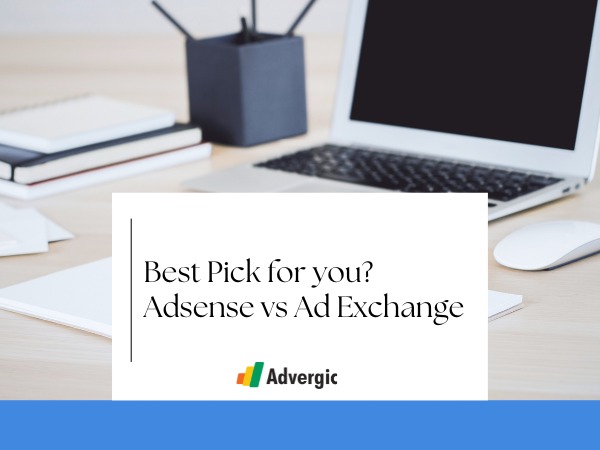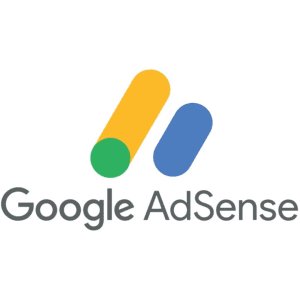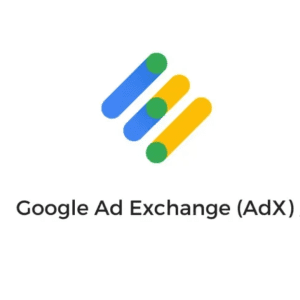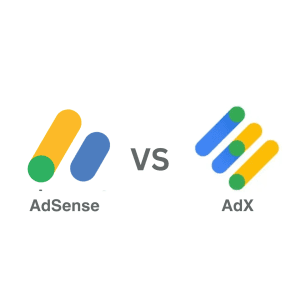Google AdSense and Google AdX are both powerful advertising platforms that can help website publishers genera…
Google AdSense and Google AdX are both powerful advertising platforms that can help website publishers generate revenue from their ad space. But which one is right for you? To decide, it’s important to understand the key differences between the two platforms.
What is Google AdSense?
Google AdSense is an ad network that connects publishers with advertisers. When a publisher signs up for AdSense, Google has the option to automatically place relevant ads with different ad formats on their website. Advertisers pay Google each time a user clicks on one of their ads. AdSense publishers earn a percentage of this revenue.
AdSense is a good option for publishers of all sizes, but it’s especially well-suited for smaller publishers with limited resources. It’s easy to set up and use, and it doesn’t require any specialized knowledge.
Key Features of AdSense
1. Diverse Ad Formats
AdSense offers a variety of ad formats, including overlays (e.g., Vignette, Anchor, Sticky Side Rails), and/or in-page (e.g., display or text banners, multiplex ads and search ads). This flexibility allows you to seamlessly integrate ads into your website’s design.
2. Easy Setup
Setting up AdSense is straightforward, making it ideal for beginners. It provides a hassle-free way to start earning from your website traffic. You can set up auto ads that automatically place ads using machine learning without your involvement. You can exclude any specific pages on your website, or any specific areas on a page of your website.
3. Reliable Payments
Google ensures timely payments, and the minimum payout threshold is achievable for most publishers.
What is Google AdX?
Google AdX or Ad Exchange is an ad exchange that allows publishers to sell their ad inventory to multiple advertisers, ad agencies, and/or ad networks, in real time. Advertisers bid on ad space in a real-time auction, and the highest bidder wins. Google AdX Auction works on a First-Price auction mechanism. AdX publishers earn a percentage of the winning bid.
Ad Exchange is a good option for larger publishers with premium ad inventory. It gives publishers more control over their ad inventory and allows them to maximize their revenue. However, Ad Exchange is a bit complex to set up and use, as compared to AdSense.
Key Features of AdX
1. Premium Advertisers
AdX attracts premium advertisers, resulting in higher RPMs (rate per thousand impressions) and potentially increased revenue for publishers.
2. Advanced Optimization
The platform offers advanced tools for optimizing ad placements, predefined and custom targeting, manual and automated floors, ensuring you make the most of your ad inventory.
3. Programmatic Advertising
AdX allows you to tap into the world of programmatic advertising, enabling publishers to sell their inventory in real-time programmatic auction. AdX allows publishers to sell using Open Auction, Programmatic Guaranteed Deals, First Look pricing or Private Auction, and Preferred deals.
Key differences between AdSense and AdX
The main difference between AdSense and AdX is that AdSense is an ad network, whereas AdX is an ad exchange. Google AdSense derives its demand from a single source, Google Ads (previously called Google AdWords) while AdX has multiple demand sources, e.g., Google Ads, Display and Video 360 (DV360), tens of third party ad networks, direct advertisers, and ad agencies. Having connected to multiple demand sources, AdX acts as a marketplace where publishers can sell their ad inventory to the highest bidding advertiser and generate more revenue.
How can AdX offer more benefits to publishers?
Being a huge ad marketplace, Ad Exchange holds the potential to offer numerous benefits to publishers due to its advanced features and capabilities. Here’s how Ad Exchange can prove to be more beneficial for the publishers:
1. Higher Revenue Potential:
Ad Exchange attracts premium advertisers, including larger brands and agencies. These advertisers are often willing to pay higher prices for premium ad inventory, resulting in increased revenue per thousand impressions (RPM). This means a publisher with highly optimized ad inventory can earn more ad revenue from AdX as compared to AdSense.
2. Advanced Optimization Tools:
Ad Exchange provides publishers with a suite of advanced tools and features for optimizing ad placements. These tools allow you to fine-tune ad delivery, target specific audiences, and maximize the performance of your ads. The ability to optimize ad placements can significantly enhance your revenue potential.
3. Programmatic Advertising:
Ad Exchange is at the forefront of programmatic advertising, which involves the automated buying and selling of digital ads in real-time auctions. Programmatic advertising enables precise targeting, allowing you to deliver ads to the right audience at the right time. This results in higher engagement and better ad performance.
4. Programmatic Guaranteed Deals:
Another amazing feature of AdX is programmatic guaranteed (PG) deals. Personalized programmatic direct deals enable the publishers to offer a set amount of highly targeted ad inventory and the advertiser pays a pre-negotiated price.
5. Access to Premium Advertisers:
Ad Exchange is known for attracting premium advertisers who are looking for high-quality ad placements. These advertisers are often interested in reaching specific demographics or audiences. This leads to increased demand for your ad space and higher RPMs.
6. Flexible Ad Inventories and Formats:
Google AdX offers support for multiple inventory types and ad formats. These include overlays such as vignette, anchor, and sticky side rails, in-page formats like display or text banners, multiplex ads, and search ads, as well as video ads. AdX caters to both websites and apps, empowering publishers to seamlessly integrate ads without disrupting the user interface.
7. Real-Time Bidding:
Ad Exchange operates on a real-time bidding (RTB) model, where advertisers compete for ad impressions in real-time first price auctions. This competitive environment can drive up ad prices, resulting in higher earnings for publishers.
8. Precise Control:
Ad Exchange provides publishers with precise control over their ad placements. You can set rules and preferences to ensure that ads align with your website’s content and user experience. These controls allow publishers to maintain the UI/UX, while maximizing ad revenue.
In summary, Ad Exchange offers benefits such as higher revenue potential, advanced optimization tools, programmatic advertising capabilities, access to premium advertisers, flexible ad formats, real-time bidding, and precise control. These advantages make Ad Exchange an attractive option for publishers looking to optimize their ad revenue and deliver a better advertising experience to their audience.
Which one should you choose?
If you’re a smaller publisher with limited resources, AdSense is a good option for you. It’s easy to set up and use, and it doesn’t require any specialized knowledge. But if you’re a larger publisher with premium ad inventory, you should opt for AdX. It gives you more control over your ad inventory and allows you to maximize your revenue. However, Ad Exchange is more complex to set up and use than AdSense.
Signing up for AdSense is an easy procedure and Google offers a single-step process to get started. Whereas signing up for AdX is not as easy. AdSense publishers can either get an invite from Google itself if they surpass the minimum sign up criteria in their existing Ad Manager accounts, or they can associate with a third party (Google AdX reseller) like Advergic to gain access to AdX.
Google offers Multiple Customer Management (MCM) and Google Publishing Partner Certifications to enable third parties to resell AdX. These third parties will resell your ad inventories through AdX in return for a small percentage of your total revenue.
AdSense vs AdX
Let’s have a brief look at the main differences between Google AdSense and AdX:
| Aspect | Google AdSense | Google AdX |
| Platform Access | Easy sign up for an AdSense account through the AdSense website. | Must have a Google Ad Manager account to access AdX. |
| Eligibility | Open to all publishers, regardless of size or traffic. | Typically available for publishers with larger ad inventories or those with complex advertising needs. |
| Implementation | Very simple. Just place AdSense code on the website to display ads. | Must have proper ad inventory and delivery setup in Google Ad Manager. |
| Ad Formats | Offers a range of ad formats, e.g., Overlays (anchor, vignette and sticky side rails) and In-Page (display or text banners, in-read units, multiplex, and search formats) | Provides custom support for a wide range of in-page or out-of-page ad formats. More customizable ad inventory as compared to AdSense. |
| Ad Quality Control | AdSense provides some control over which type of ads are shown on your website. Some categories can entirely be blocked. | Ad Exchange provides a wide range of blocking controls on individual ad units’ level, as well as individual ads or entire ad accounts can be blocked. |
| Auction Mechanism | AdSense runs an open auction among all the advertisers and bidders. Highest paying ad will be shown to the user. | AdX supports programmatic channels (i.e., Open Auction, Private Auction, Programmatic Guaranteed, and Preferred Deals) and non-programmatic channels. |
| Advanced Reporting | AdSense offers a range of reporting tools that can help publishers understand higher performing ad units or web pages. | Ad Exchange offers a diverse reporting platform that can help publishers run way more complex reports as compared to AdSense. Publishers can apply various filters, select different sets of dimensions, and choose different metrics to gain more valuable insights. |
How Advergic helps you maximize your revenue?
Advergic is a top-notch ad tech solution provider that sets the gold standard for publishers with carefully optimized ad setup and strictly following Google and IAB Advertising standards. We make sure there is no room for ambiguity by ensuring 100% compliance with Google’s publishing policies to build a foundation of trust and transparency.
Advergic is committed to quality, and guarantees a minimum 60% ad viewability across all ad placements including ads that are placed below the fold and in the footer, which are notoriously hard to get seen. We can increase your ad inventory by up to 25% using smart refreshes, which helps in further boosting your ad revenue. Considering Advergic to gain access to Google AdX, to optimize your ad inventory, and to maximize your ad revenues, is an excellent choice with several compelling reasons:
- Expertise and Guidance: At Advergic we have a team of digital advertising and ad tech ecosystem professionals. Our expertise helps publishers to navigate complex programmatic advertising landscape. Just fill out our online form and our support team will contact you to help you boost your ad earnings.
- Ad Quality and Inventory Optimization: Advergic recommends ad placement, formats, and targeting to maximize revenue. Our ad tech ensures that your site’s advertising is high-quality, improving user experience and fetching higher bids. Our insights can help you earn more through your ad inventory.
- Monitoring and Optimization: Once you join Advergic, we integrate AdX with your website for seamless usage and monitor and optimize your ads daily to maximize revenue.
- Reporting and Support: Advergic provides regular ad performance reports to assist you make data-driven revenue-boosting decisions.We swiftly address AdX issues and provide support to ensure a smooth and efficient experience.
In summary, Advergic serves as a valuable partner in your journey to maximize your ad revenue. Our expertise, efficiency, and dedication to optimizing your ad revenue make us a compelling choice for publishers seeking to earn more.
Have questions about Header bidding wrapper and price granularity?
Schedule a free consultation with our Header Bidding Expert today 📞






